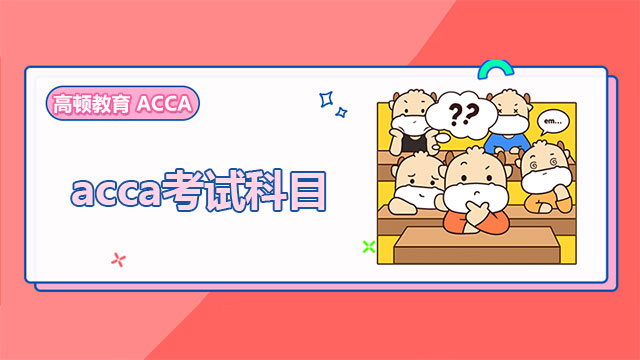试题回顾,ACCA考试《公司报告P2》知识辅导1
来源:
高顿网校
2015-03-18
博学之,审问之,慎思之,明辨之,笃行之。 高顿网校为广大学员提供2015年ACCA考试网络课程,助您一臂之力,2015年考试顺利通过!祝您梦想成真!免费听课》
BIN THE CLUTTER
The effects of clutter have typically come in for little consideration by the preparers of annual reports. However, the phenomenon is increasingly under discussion, with initiatives recently launched to combat it
It is unusual to think about the effects of ˉclutterˇ but, increasingly, this phenomenon is being discussed. One prominent website describes clutter as follows: ˉClutter invades your space and takes over your life. Clutter makes you disorganised, stressed, out of control. Clutter distracts you from your priorities. Clutter can stop you achieving your goals.ˇ This definition of clutter may not be completely applicable to annual reports, but it is possible to see certain aspects, which are applicable.
The UKˇs Financial Reporting Council (FRC), among other organizations, has called for reduced ˇclutterˇ in annual reports. Additionally, the Institute of Chartered Accountants In Scotland (ICAS) and the New Zealand Institute of Chartered Accountants (NZICA) were commissioned by the IASB to make cuts to the disclosures within a certain group of IFRSs, and produce a report.
Clutter in annual reports is a problem, obscuring relevant information and making it more difficult for users to find the key points about the performance of the business and its prospects for long-term success. The main observations of the discussion paper published by the FRC were:
there is substantial scope for segregating standing data, either to a separate section of the annual report (an appendix) or to the companyˇs website immaterial disclosures are unhelpful and should not be provided the barriers to reducing clutter are mainly behavioural there should be continued debate about what materiality means from a disclosure perspective.
It is important for the efficient operation of the capital markets that annual reports do not contain unnecessary information. However, it is equally important that useful information is presented in a coherent way so that users can find what they are looking for and gain an understanding of the companyˇs business and the opportunities, risks and constraints that it faces. A company, however, must treat all of its shareholders equally in the provision of information. It is for each shareholder to decide whether they wish to make use of that information. It is not for a company to pre-empt a shareholder's rights in this regard by withholding the information.
A significant cause of clutter in annual reports is the vast array of requirements imposed by laws, regulations and financial reporting standards. Regulators and standard setters have a key role to play in cutting clutter both by cutting the requirements that they themselves already impose and by guarding against the imposition of unnecessary new disclosures. A listed company may have to comply with listing rules, company law, international financial reporting standards, the
corporate governance codes, and if it has an overseas listing, any local requirements, such as those of the Securities and Exchange Commission (SEC) in the US. Thus, a major source of clutter is the fact that different parties require differing disclosures for the same matter. For example, an international bank in the UK may have to disclose credit risk under IFRS 7, Financial Instruments: Disclosures, the Companies Acts and the Disclosure and Transparency Rules, the SEC rules and Industry Guide 3, as well as
the requirements of Basel II Pillar 3. A problem is that different regulators have
different audiences in mind for the requirements they impose on annual reports. Regulators attempt to reach wider ranges of actual or potential users and this can lead to a loss of focus and structure in reports.
There may a need for a proportionate approach to the disclosure requirements for small and mid-cap quoted companies that take account of the needs of their investors, as distinct from those of larger companies. This may be achieved by different means. For example, a principles-based approach to disclosures in IFRS, specific derogations from requirements in individual IFRS or the creation of an appropriately adapted local version of the IFRS for SMEs. Pressures of time and cost can understandably lead to defensive reporting by smaller entities and to choosing easy options, such as repeating material from a previous year, cutting and pasting from the reports of other companies and including disclosures of marginal importance.
There are behavioural barriers to reducing clutter. It may be that the threat of criticism or litigation could be a considerable limitation on the ability to cut clutter. The threat of future litigation may outweigh any benefits to be obtained from eliminating ˉcatch-allˇ disclosures. Preparers of annual reports are likely to err on the side of caution and include more detailed disclosures than are strictly necessary to avoid challenge from auditors and regulators. Removing disclosures is perceived as creating a risk of adverse comment and regulatory challenge. Disclosure is the safest option and is therefore often the default position. Preparers and auditors may be reluctant to change from the current position unless the risk of regulatory challenge is reduced. Companies have a tendency to repeat disclosures because they were there last year.
Explanatory information may not change from year to year but it nonetheless remains necessary to an understanding of aspects of the report. There is merit in a reader of an annual report being able to find all of this information in one place. If the reader of a hard copy report has to switch to look at a website to gain a full understanding of a point in the report, there is a risk that the report thereby becomes less accessible rather than more. Even if the standing information is kept in the same document but relegated to an appendix, that may not be the best place to facilitate a quick understanding of a point. A new reader may be disadvantaged by having to hunt in the small print for what remains key to a full understanding of the report.
Preparers wish to present balanced and sufficiently informative disclosures and may be unwilling to separate out relevant information in an arbitrary manner. The suggestion of relegating all information to a website assumes that all users of annual reports have access to the internet, which may not be the case. A single report may
best serve the investor, by having one reference document rather than having the information scattered across a number of delivery points.
Shareholders are increasingly unhappy with the substantial increase in the length of reports that has occurred in recent years. This has not resulted in more or better information, but more confusion as to the reason for the disclosure. A review of companiesˇ published accounts will show that large sections such as ˉStatement of Directors Responsibilitiesˇ and ˉAudit Committee reportˇ are almost identical.
Materiality should be seen as the driving force of disclosure, as its very definition is based on whether an omission or misstatement could influence the decisions made by users of the financial statements. The assessment of what is material can be highly judgmental and can vary from user to user. A problem that seems to exist is that disclosures are being made because a disclosure checklist suggests it may need to be made, without assessing whether the disclosure is necessary in a companyˇs particular circumstances. However, it is inherent in these checklists that they include all possible disclosures that could be material. Most users of these tools will be aware that the disclosure requirements apply only to material items, but often this is not stated explicitly for users.
One of the most important challenges is in the changing audiences. From its origins in reporting to shareholders, preparers now have to consider many other stakeholders including employees, unions, environmentalists, suppliers, customers, etc. The disclosures required to meet the needs of this wider audience have contributed to the increased volume of disclosure. The growth of previous initiatives on going concern, sustainability, risk, the business model and others that have been identified by regulators as ˉkeyˇ has also expanded the annual report size.
The length of the annual report is not necessarily the problem but the way in which it is organised. The inclusion of ˉimmaterialˇ disclosures will usually make this problem worse but, in a well organised annual report, users will often be able to bypass much of the information they consider unimportant, especially if the report is on line. It is not the length of the accounting policies disclosure that is itself problematic, but the fact that new or amended policies can be obscured in a long note running over several pages. A further problem is that accounting policy disclosure is often ˉboilerplateˇ, providing little specific detail of how companies apply their general policies to particular transactions.
IFRS requires disclosure of ˉsignificant accounting policiesˇ。 In other words, IFRS does not require disclosure of insignificant or immaterial accounting policies. Omissions in financial statements are material only if they could, individually or collectively, influence the economic decisions that users make. In many cases, it would not. Of far greater importance is the disclosure of the judgments made in selecting the accounting policies, especially where a choice is available.
A reassessment of the whole model will take time and may necessitate changes to law and other requirements. For example, unnecessary clutter could be removed by
not requiring the disclosure of IFRS in issue but not yet effective. The disclosure seems to involve listing each new standard in existence and each amendment to a standard, including separately all those included in the annual improvements project, regardless of whether there is any impact on the entity. The note becomes a list without any apparent relevance.
The IASB has recently issued a request for views regarding its forward agenda in which it acknowledges that stakeholders have said that disclosure requirements are too voluminous and not always focused in the right areas. The drive by the IASB has very much been to increase the use of disclosure to address comparability between companies and, in the short to medium term, a reduction in the volume of accounting disclosures does not look feasible although this is an area to be considered by the IASB for its post 2012 agenda.
Written by a member of the Paper P2 examining team
小编寄语:成功的人是跟别人学习经验,失败的人只跟自己学习经验。
| ACCA网络课程 | 课程专业名称 | 讲师 | 试听 |
 85%的人正在学习该课程 85%的人正在学习该课程 | ACCA 全维度网课体验课程 实景课堂与独立录制 覆盖所有知识点,根据学习计划推进学习进度 | 高顿名师 |  |
 70%的人正在学习该课程 70%的人正在学习该课程 | ACCA网课全科卡(8.2折) 为零基础刚开始学习ACCA的学员特别定制 | 高顿名师 |  |
精彩推荐:
版权声明:本条内容自发布之日起,有效期为一个月。凡本网站注明“来源高顿教育”或“来源高顿网校”或“来源高顿”的所有作品,均为本网站合法拥有版权的作品,未经本网站授权,任何媒体、网站、个人不得转载、链接、转帖或以其他方式使用。
经本网站合法授权的,应在授权范围内使用,且使用时必须注明“来源高顿教育”或“来源高顿网校”或“来源高顿”,并不得对作品中出现的“高顿”字样进行删减、替换等。违反上述声明者,本网站将依法追究其法律责任。
本网站的部分资料转载自互联网,均尽力标明作者和出处。本网站转载的目的在于传递更多信息,并不意味着赞同其观点或证实其描述,本网站不对其真实性负责。
如您认为本网站刊载作品涉及版权等问题,请与本网站联系(邮箱fawu@gaodun.com,电话:021-31587497),本网站核实确认后会尽快予以处理。
点一下领资料
【整理版】ACCA各科目历年真题
真题高频考点,刷题全靠这份资料
下载合集
acca全科学习思维导图
梳理核心考点,一图看懂全部章节
下载合集
2023年acca考纲解析
覆盖科目重难点,备考按照计划走
下载合集
acca备考 热门问题解答
- acca考试怎么搭配科目?
-
建议优先选择相关联的科目进行搭配报考,这样可以提高备考效率,减轻备考压力,1、F1-F4:为随时机考科目,难度较低,这里可以自行随意选择考试顺序。2、F5-F9:如果你的工作的和财务会计或者审计有关、或者你比较擅长财务和审计的话,推荐先考F7和F8。你可以选择一起考ACCA考试科目F7和F8或者先考F7(8)再考F8(7),这就要取决你一次想考几门。3、P阶段:选修科目中,建议企业首选AFM!第二部分科目进行选择,如果AA和SBR掌握学生更好,可以通过选择AAA,如果SBL掌握的好,可以自己选择APM。
- acca一共几门几年考完?
-
acca一共有15门考试科目,其中有必修科目和选修科目,考生需要考完13门科目才能拿下证书。
- acca一年考几次?
-
acca一年有4次考试,分别是3月、6月、9月和12月,分季机考科目是采取的这类四个考季的模式,而随时机考则是没有这方面的时间规定限制,可以随报随考。
- acca的含金量如何?
-
ACCA证书的含金量是比较高的,从就业、能力提升、全球认可等角度来说,都是比较有优势的证书,其含金量主要表现在以下几个方面:1、国际化,认可度高;2、岗位多,就业前景好;3、缺口大,人才激励。
严选名师 全流程服务
其他人还搜了
热门推荐
-
acca专业阶段考试科目有哪些?究竟都考些什么? 2023-04-23
-
accaP阶段科目考完需要多久?速戳了解! 2023-03-28
-
ACCA高级课程是哪几门?和基础课程比难度怎么样? 2023-03-17
-
sbr和sbl哪个难?accaP阶段先考哪个? 2023-03-16
-
accaP阶段报名费是多少?一文介绍全了! 2023-03-14
-
accaP阶段有哪些科目?各科目详细介绍! 2023-03-14
-
accap阶段考试顺序是怎样的?选修科目怎么选? 2023-03-10
-
acca考试科目:《ATX高级税务》重点详解! 2023-03-06
-
acca考试科目:《APM高级业绩管理》重点详解! 2023-03-06
-
acca考试科目:《AFM高级财务管理》重点详解! 2023-03-06
-
accap阶段有效期是多久?需要几年内考完? 2023-03-01
-
accaP阶段选修选哪两门?各科难度对比来了! 2023-02-28
-
2023年acca的sbl怎么学?点击查收备考攻略! 2023-02-24
-
acca考试p阶段科目题型,附各科分值参考! 2023-02-23
-
accap阶段要考几门?重难点是什么? 2023-02-10
-
accap阶段要考几门?重难点是什么? 2023-02-10
-
accaP阶段科目怎么搭配?先考哪门? 2023-02-09
-
ACCA专业P阶段:《AFM高级财务管理》复习攻略 2023-01-30
-
accap阶段选哪两门?考试重难点介绍! 2023-01-17
-
acca考试科目:《AAA高级审计与鉴证》题型及重点! 2023-01-17
-
acca专业阶段考试难度分析,选修科目报考指南来了! 2023-01-12
-
accap阶段报考顺序推荐,先报哪个好? 2022-12-15
-
ACCAp阶段一次最多考几门?成绩有效期是多久? 2022-08-24
-
ACCA的p阶段需要备考多久才够?考试难度怎么样? 2022-08-18
-
ACCAp阶段考试需要考几门?考试时间是哪天? 2022-08-15
-
ACCA考试P阶段考几门?P阶段成绩有效期是多久? 2022-08-12
-
ACCAP阶段科目难度高吗?P阶段是机考吗? 2022-08-10
-
ACCA最后四门难考吗?通过率怎么样? 2022-07-19
-
ACCA英语不好怎么办?怎么提高英语? 2022-07-14
-
ACCA机考报名时间是什么时候?怎么报考? 2022-07-14
 更多服务
更多服务









































